Zaratan — plate 59
The Arti che vanno per via nella città di Venezia (1753, 1770, 1785, etc.), by Gaetano Zompini (1700–1778), contains sixty engravings of common, mostly poor people, peddling their trades on the streets of Venice in the mid-1700s.
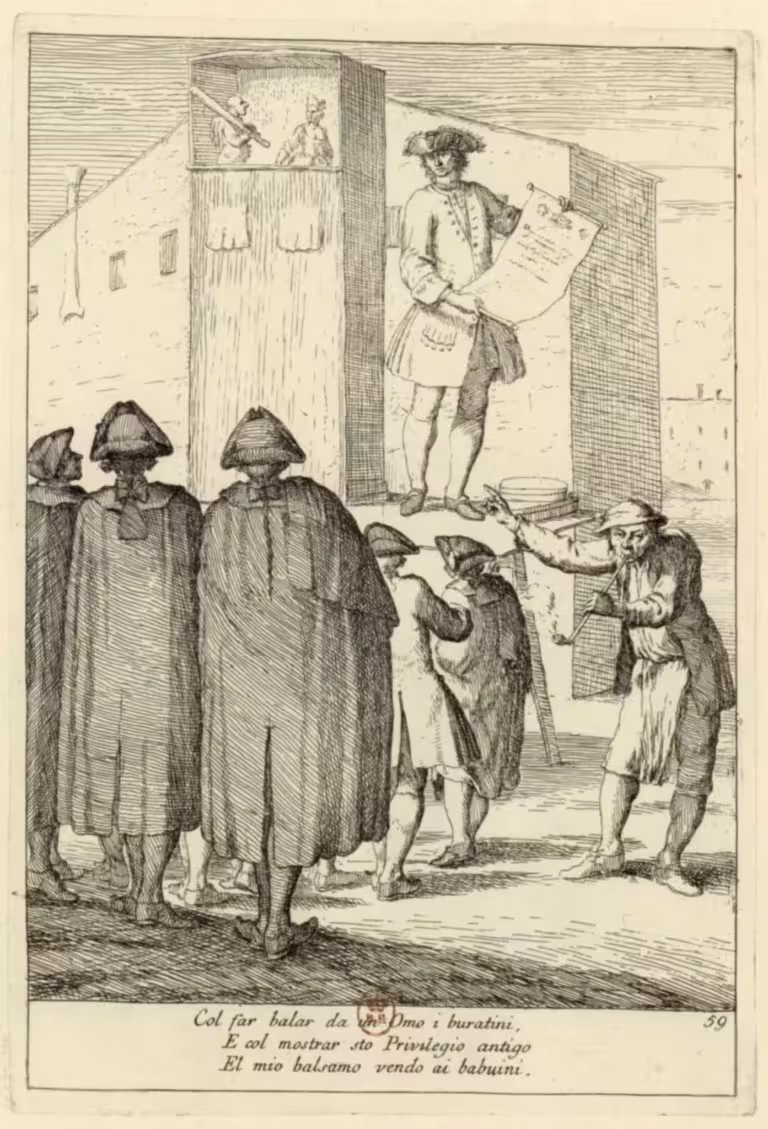
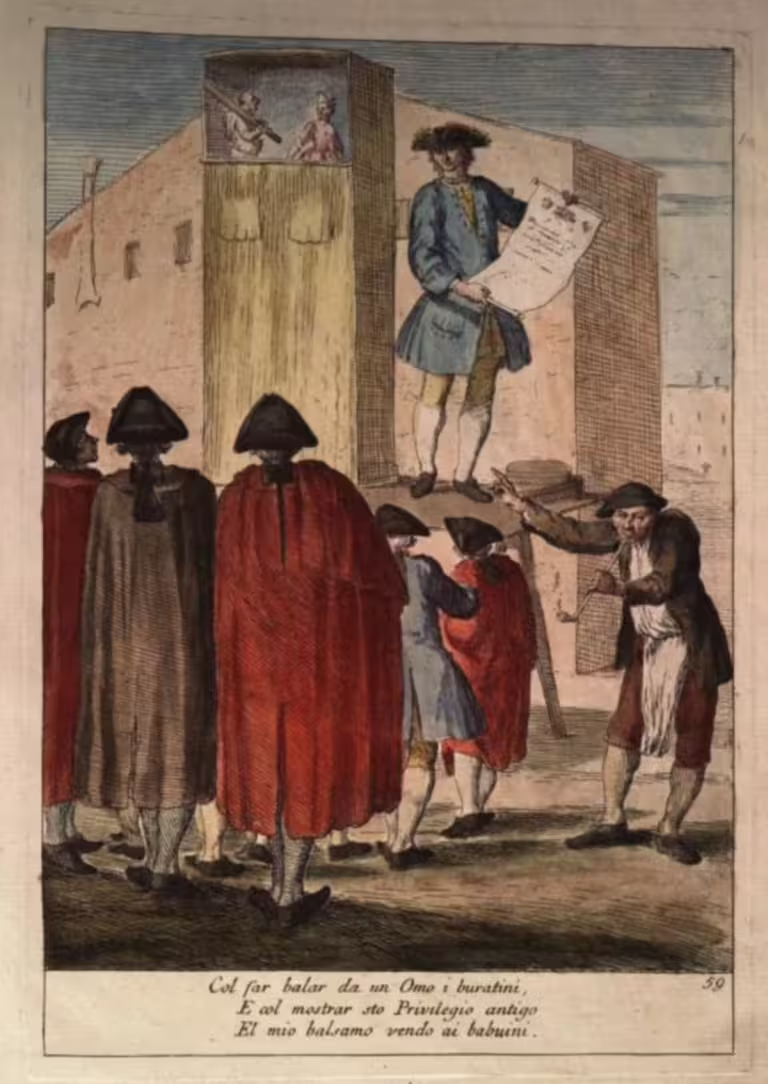
Text
Col far balar da un Omo i buratini, E col mostrar sto Privilegio antigo El mio balsamo vendo ai babuini.
Translation
By having a man make puppets dance,
And by showing this ancient licence
I sell my snake-oil to the baboons.
Notes
Frauds and snake-oil sellers are nothing new.
There were several types of balm — balsamo — but the most significant was balsamo della meca — Balm of Mecca — which has a role in the Christian sacraments.
That countless frauds happened around such almost magical substances, cannot be a surprise. Boerio in his Dizionario del Dialetto Veneziano mentions the ideom el parla che par ch’el venda balsamo de la meca — he speaks as if he’s selling Balm of Mecca — in the sense that he’s being very persuasive about something which is probably not genuine.
The privilegio antigo is a likely false licence to sell the balsamo. Pharmacies required licences to operate under the Republic of Venice.
The word babuin — baboon — was also used to mean a stupid or incoherent person.
See Boerio (1829), entries ZARATAN, VENDER – VENDER BALSAMO, BALSAMO and BABUIN.
All images
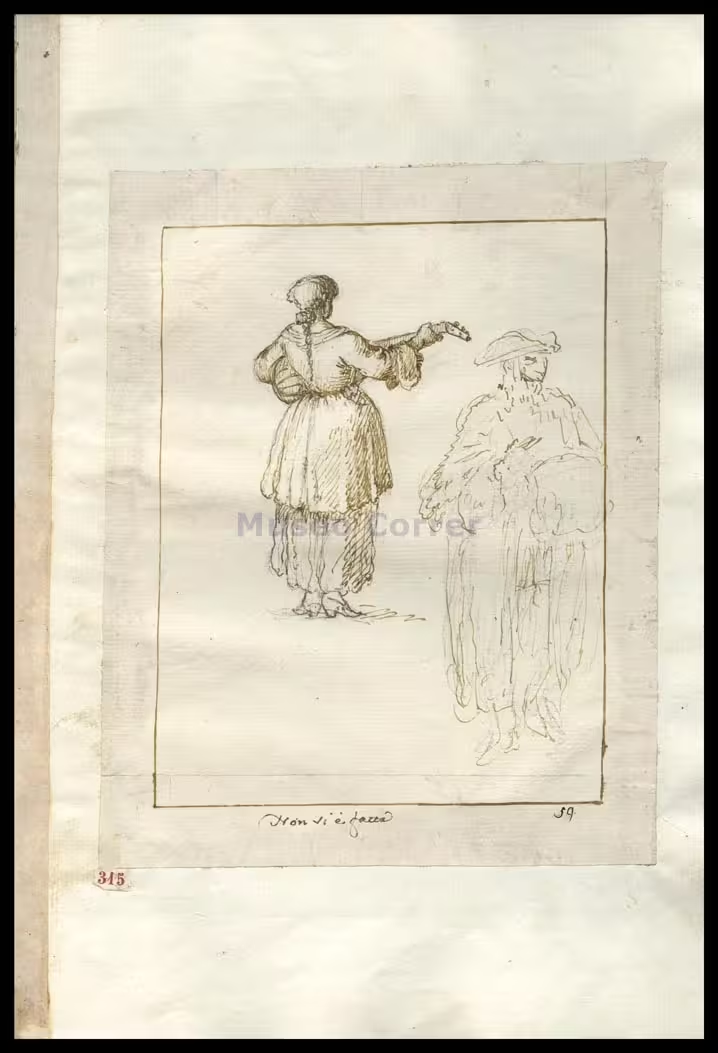
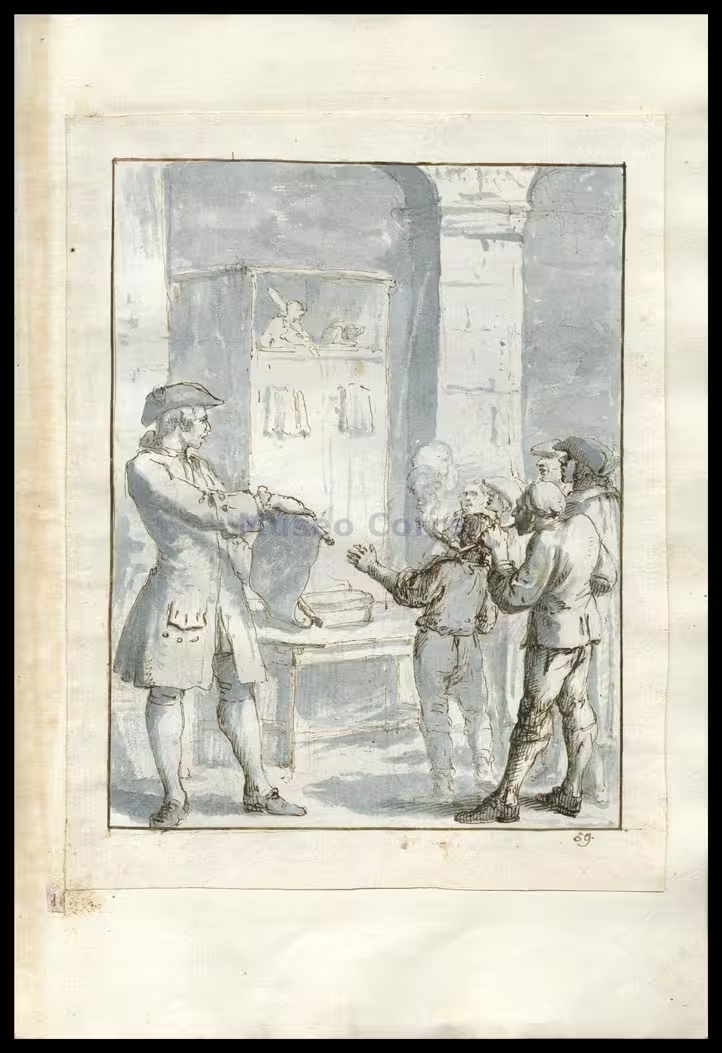

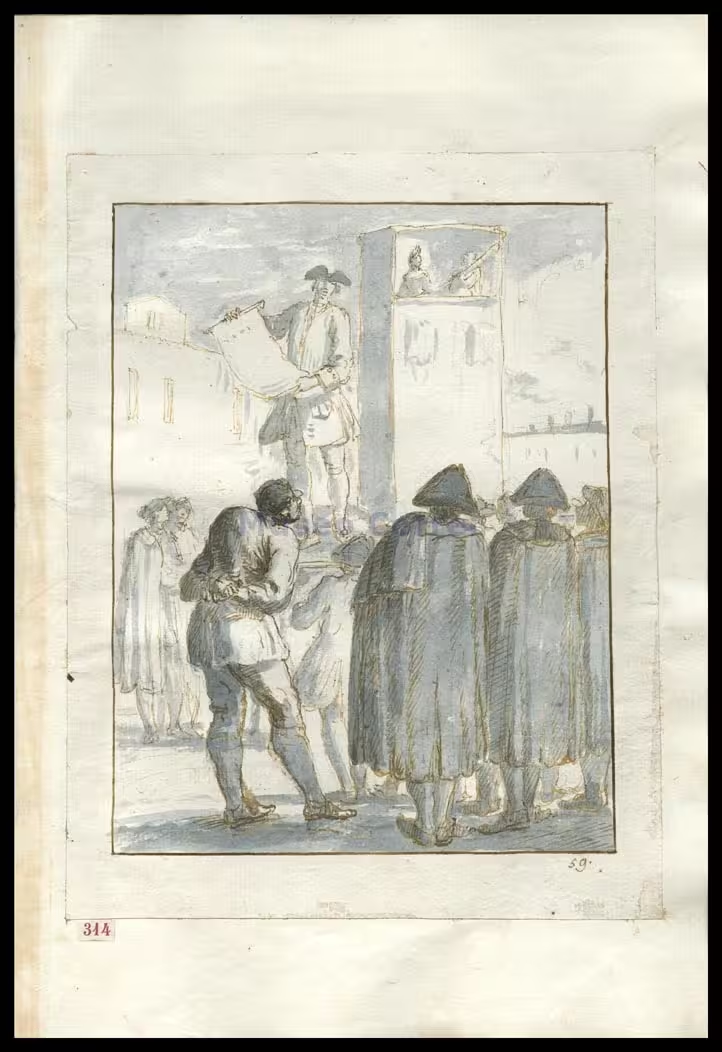
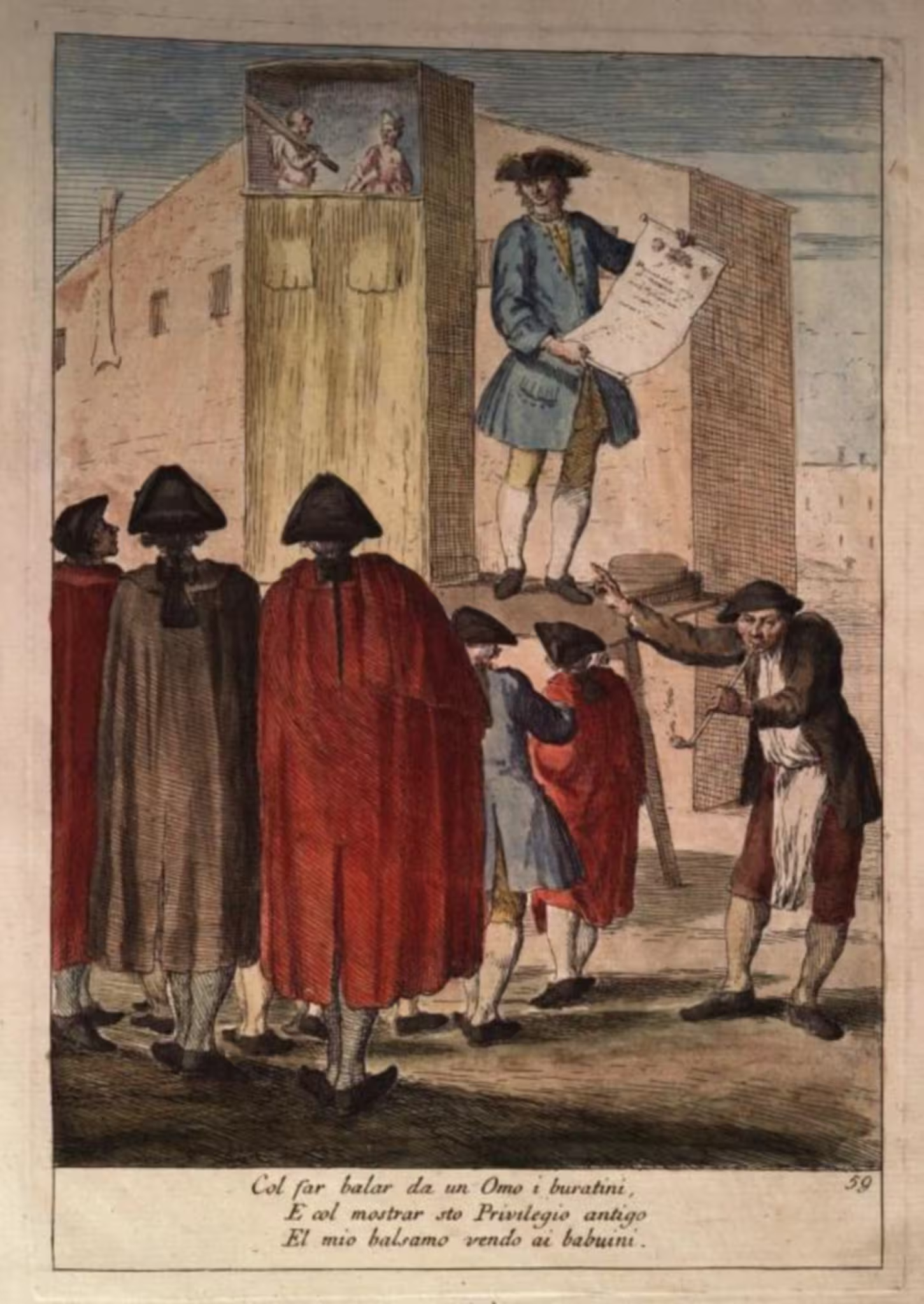
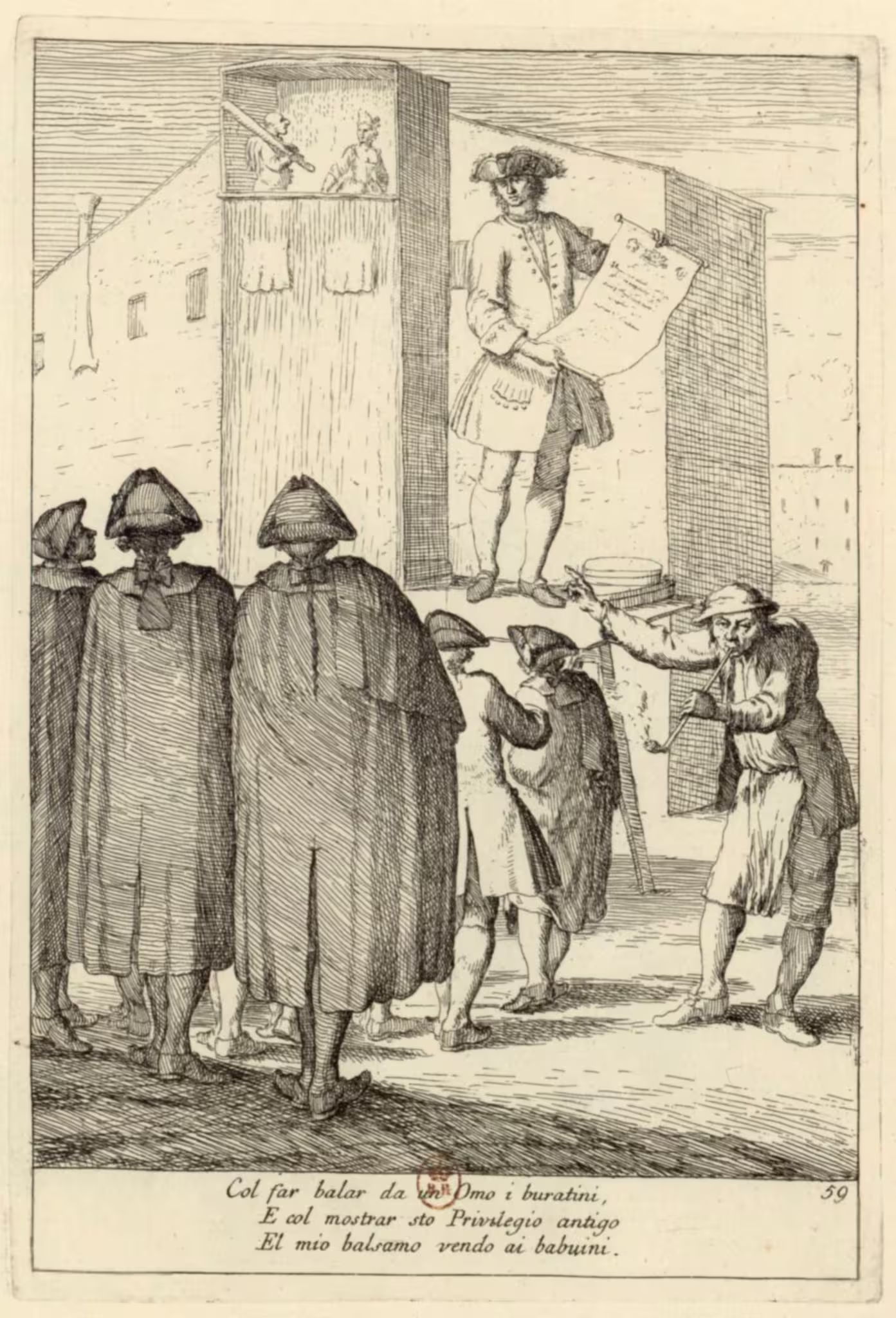
Zompini clearly struggled more than usual with the composition here.




Leave a Reply